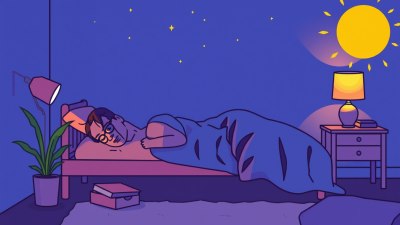Why Summer Nights Feel Hotter Now Than Ever Before
Explore the reasons summer nights feel unbearably hot, including climate change, urbanization, and more.

Summer nights have always been synonymous with warmth and relaxation, but in recent years, many people have noted an unsettling trend: those sultry evenings feel hotter than ever before. This phenomenon has several explanations, ranging from climate change to urban development, and each facet contributes to why our summer nights are increasingly uncomfortable. In exploring the underlying factors, we can better understand this rise in temperatures.
Climate Change: The Overarching Factor
At the forefront of the reasons for hotter summer nights is climate change. Global temperatures have steadily risen over the last few decades due to human activities, primarily the burning of fossil fuels, deforestation, and industrial processes that increase greenhouse gas emissions. The Intergovernmental Panel on Climate Change (IPCC) has documented these rises in temperature, warning that without significant action, the global average temperature could rise by as much as 1.5 degrees Celsius above pre-industrial levels by 2030.
As global temperatures increase, night-time temperatures are also affected. Warmer air holds more moisture, which results in humid nights that feel stickier and more oppressive than previous years. This phenomenon is particularly evident in urban areas, where heat is trapped due to the urban heat island effect.
The Urban Heat Island Effect
The urban heat island effect is a well-known phenomenon where urban areas become significantly warmer than their rural surroundings due to human activities and infrastructure. This heat retention occurs because concrete and asphalt absorb and retain heat during the day, releasing it slowly at night, which results in warmer evenings. Cities often have higher concentrations of buildings, roads, and vehicles that all contribute to this effect.
According to a study from the National Oceanic and Atmospheric Administration (NOAA), urbanization can raise night-time temperatures by as much as 10 degrees Fahrenheit (about 5 degrees Celsius) when compared to nearby rural areas. As more people move to cities, the number of heat-retaining surfaces increases, leading to more sweltering summer nights for urban dwellers.
Changes in Weather Patterns
Weather patterns also play a crucial role in the feelings of heat during summer evenings. Climate change has been linked to the increased frequency and intensity of extreme weather events. These patterns can lead to heatwaves that stretch longer into the summer months and are characterized by high daytime and night-time temperatures.
The jet stream, a band of winds high in the atmosphere, has been observed to change its behavior with a warming climate. This shift can lead to stagnant weather patterns that trap warm air over certain regions, resulting in excessively warm nights. Furthermore, these conditions can strain energy resources, leading to more frequent energy outages and further discomfort during the hottest nights.
Increased Humidity Levels
Another critical factor contributing to the feel of hotter summer nights is rising humidity levels. Warmer air can hold more moisture, leading to increased humidity in many regions. High humidity levels can make it feel significantly hotter than the thermometer indicates, as the body struggles to cool itself effectively through sweat evaporation. Conditions with high humidity may cause discomfort and health risks, especially for vulnerable populations and elderly individuals who might already be struggling with heat stress.
With climate change, many areas are experiencing dramatic increases in humidity as weather patterns shift and the overall warming of the planet leads to higher levels of water vapor in the atmosphere. As urban areas also tend to have less vegetation, this can exacerbate humidity, making summer nights seem uncomfortably sultry.
Air Conditioning and Its Impact
As summer nights grow hotter, the reliance on air conditioning has surged. While air conditioning provides immediate relief during unbearable summer nights, it also contributes to the urban heat island effect through heat emissions and further strains energy resources.
The demand for air conditioning increases during heat waves, leading to higher energy consumption. Power plants often need to increase production to cater to this demand, contributing to higher greenhouse gas emissions and worsening climate change. This creates a cycle where increased reliance on air conditioning in cities contributes to further warming, both outside and inside buildings.
Longer Summers and Shifting Seasons
Climate change not only heats up summer nights but is also responsible for lengthening the summer season itself. Many regions are experiencing longer stretches of warm weather, defined by an earlier onset of spring and a delayed transition into fall. This increase in the duration of summer may contribute to a cumulative effect where more nights are affected by heat, thus leading to a perception that nights are becoming unbearably hot.
According to the National Oceanic and Atmospheric Administration (NOAA), summers in many parts of the world have lengthened by an average of about 10 to 14 days since the 1950s, further compounding the discomfort experienced during these warmer nights.
Natural Variability and El Niño Effects
Natural cycles, such as the El Niño and La Niña effects, also play an essential role in summer temperatures. During an El Niño event, sea surface temperature anomalies in the Pacific Ocean can lead to widespread alterations in weather patterns globally, often resulting in warmer summers and increased humidity levels.
The consequences of these cyclical weather variations may amplify the general trends related to climate change, making some summers feel hotter than they statistically should. The interaction between these natural climate variability factors and human-induced climate change complicates the overall picture of temperature fluctuations.
Adaptation and Resilience Strategies
To tackle the increasing discomfort of hot summer nights, communities and individuals must adopt various adaptation and resilience strategies. Urban areas should prioritize increasing green spaces, providing shade through urban canopies, and encouraging the use of reflective or green roofing materials to counteract the urban heat island effect.
Moreover, public awareness campaigns promoting energy efficiency in homes, reducing reliance on fossil fuels, and adopting renewable energy sources can contribute significantly to reducing greenhouse gas emissions. Communities can implement policies that promote public transport, reducing vehicle traffic, and increasing public green spaces, improving the quality of life during the hot summer months.
The growing sensation of hotter summer nights is a complex interplay of factors rooted in climate change, urbanization, and natural variability. Understanding the causes behind rising temperatures is paramount to effectively addressing the discomfort felt during these sultry evenings. By recognizing the impacts of our actions and investing in sustainable practices, we can combat the encroaching heat of summer and aim for cooler, more bearable nights ahead.











